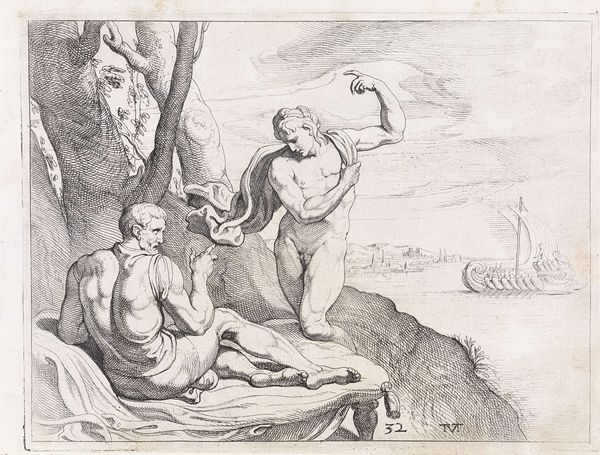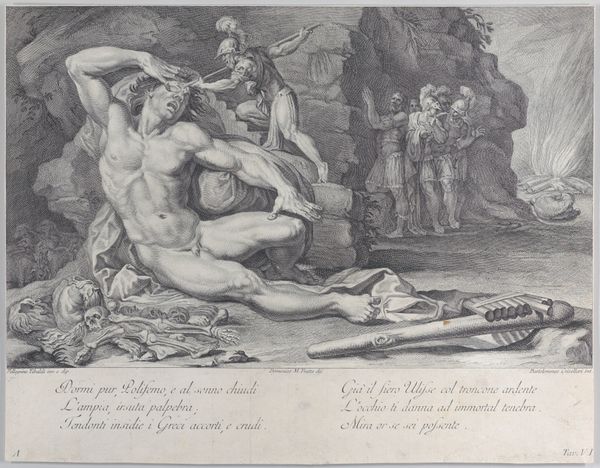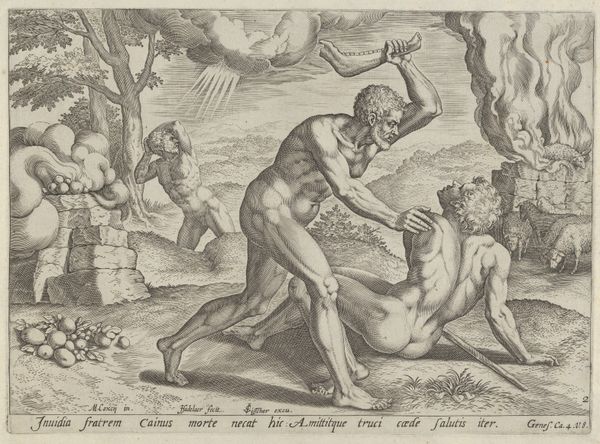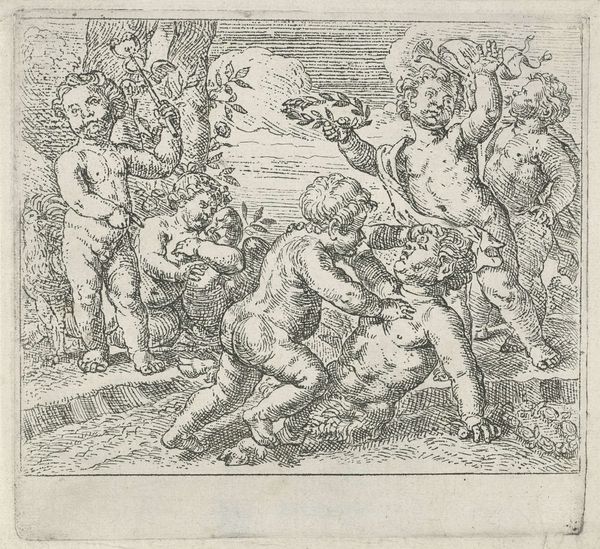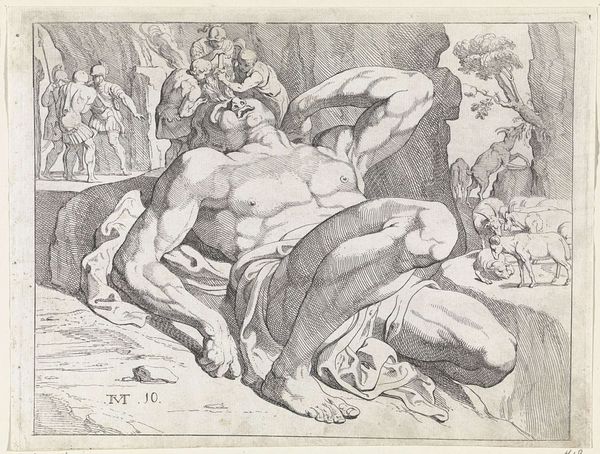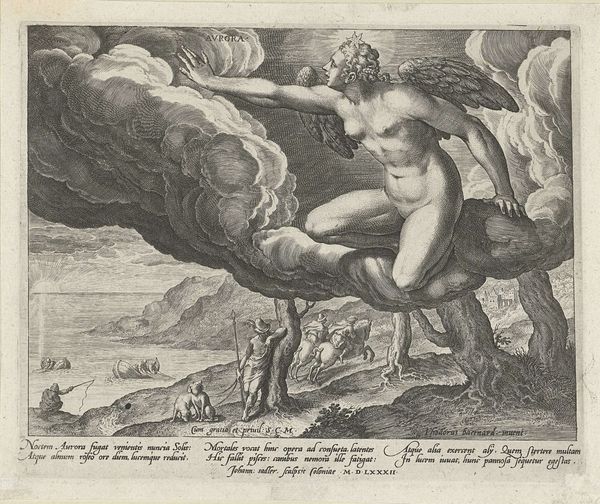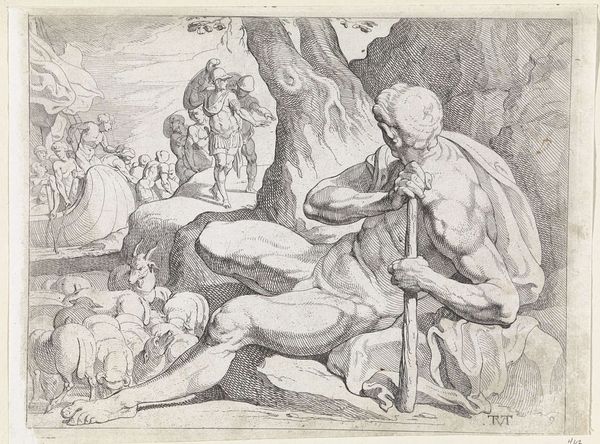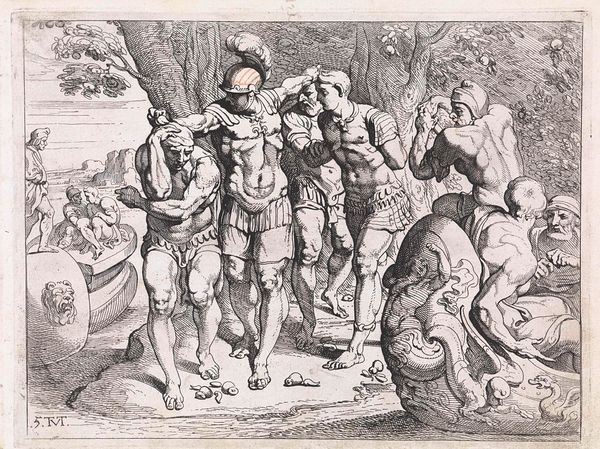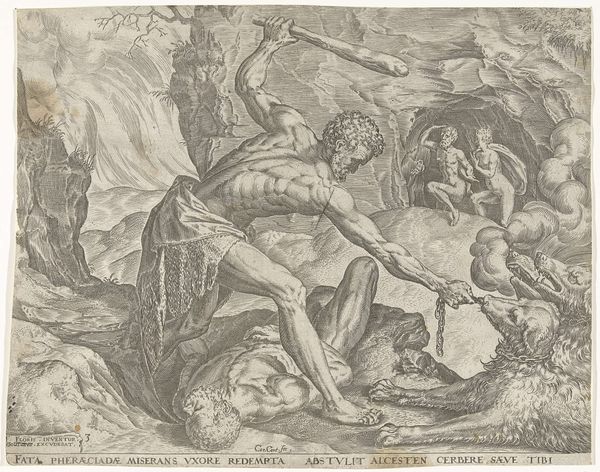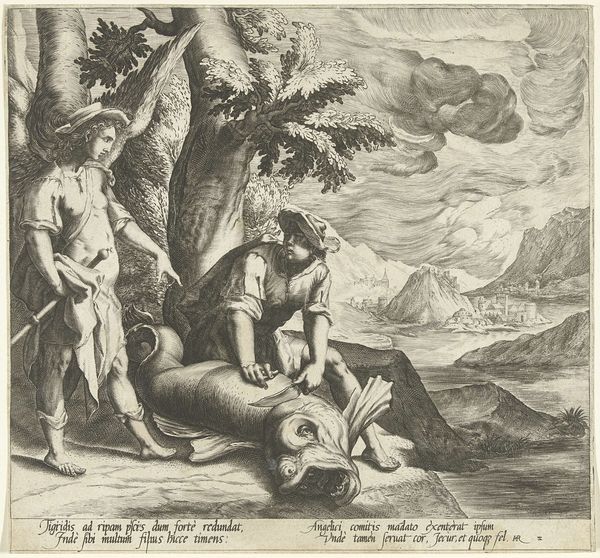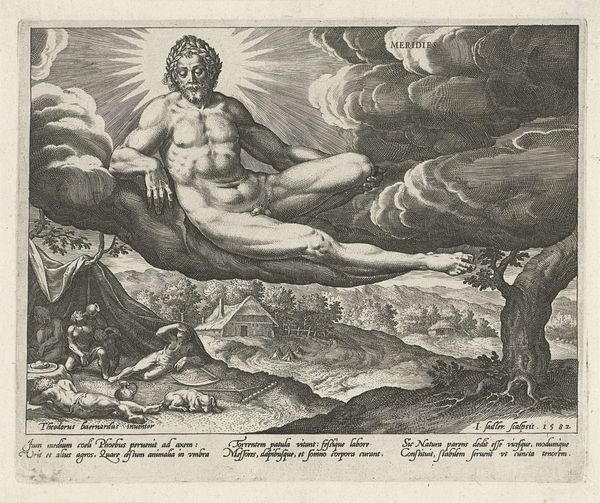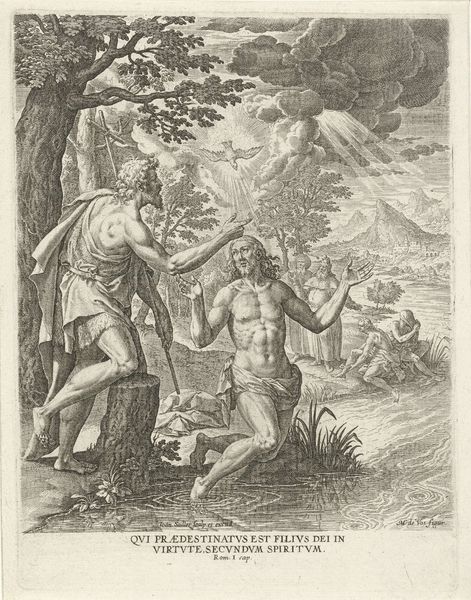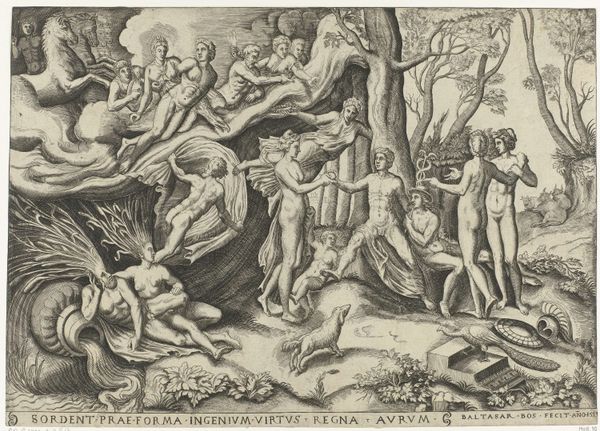
print, engraving
#
narrative-art
#
baroque
# print
#
pen sketch
#
landscape
#
figuration
#
history-painting
#
engraving
Dimensions: height 199 mm, width 253 mm
Copyright: Rijks Museum: Open Domain
Editor: So, here we have Theodoor van Thulden's engraving, "Polyphemus werpt een rots naar het schip van Odysseus," created around 1632. There's such raw energy in this small print, this moment of mythical fury. How do you even begin to interpret a piece like this? Curator: Ah, that’s a question that plunges us right into the heart of the Baroque. What strikes me isn't just the overt drama, but the intimacy achieved in this limited space. Van Thulden, you see, wasn't merely illustrating a story. It's almost as if we're privy to a glimpse into the psyche. Polyphemus, his musculature, the sheer tension of the rock— it's rage, distilled. Editor: Definitely. And the tiny ship with Odysseus and his crew… they’re almost comical in comparison, crammed together in desperation! Curator: Precisely! Isn't there something heartbreaking about that disproportion? We see heroism rendered small, vulnerable. The vastness of Polyphemus speaks of uncontrollable passions, a very human failing blown up to monstrous scale. What's truly magnificent here is Van Thulden doesn't shy away from the grotesqueries of the myth. Editor: That makes me see this whole scene so differently. It’s less about a straightforward battle and more about an exploration of power and helplessness. Curator: Exactly! And consider this, wouldn’t you agree that within its delicate lines, this print seems to whisper ancient truths? It asks whether courage can ever truly defeat raw, unthinking force. And isn’t that, in a nutshell, the eternal human predicament? Editor: It certainly offers much more food for thought. I initially saw just a mythological scene, but now, it's incredibly compelling. Curator: Beautiful, isn't it?
Comments
No comments
Be the first to comment and join the conversation on the ultimate creative platform.
